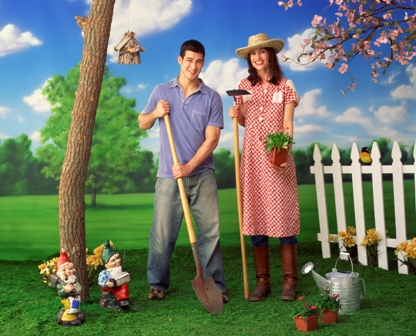 March and April herald the beginning of spring and it's time for gardeners to get busy planting. As flowering shrubs begin to bud, encourage your homeowners association residents to get their yards and gardens ready for spring by providing them with the tips below.
March and April herald the beginning of spring and it's time for gardeners to get busy planting. As flowering shrubs begin to bud, encourage your homeowners association residents to get their yards and gardens ready for spring by providing them with the tips below.
Here are some helpful tips to get ready for your spring planting:
- FROST can kill your tender plants purchased early, so watch out for clear, still nights and protect your plants with sheets, tarps, cardboard boxes or plastic. Don't touch the leaves.
- FUCHSIAS can be pruned and the cuttings given to a friend or planted elsewhere for color later in the season.
- BULBS for summer planting should be purchased now before there are none left in the stores. Don't plant them until next month though. You can start begonias, dahlias, gladiolus, watsonia, and callas indoors now for planting outside later.
- BARE ROOT TREES AND ROSES can be planted. Get into your garden center to select roses early, while there is still a good supply.
- RE-POT houseplants this month and they'll have a great spring growth.
- CHECK to see if you need an additional dormant spray on deciduous plants and roses. Only spray if they have not begun to bud otherwise they could be damaged.
- WATCH your oak trees for oak moth larvae. If you notice large masses of green droppings on the ground, call in the professionals. For a smaller tree spray it thoroughly with Bacillus thuringiensis, orthene, or carbaryl.
- LAWNS will soon be ready to be mowed regularly in most zones. Feed with high-nitrogen fertilizer. If weather is dry, seed or sod new lawns. Pull any weeds, making sure to get the roots. To control crabgrass and broad-leafed weeds, spray and pay careful attention to the labels.
- SOIL PREPARATION is important for all new flower and vegetable gardens. Spade and till, adding organic soil amendments and compost from your pile. Work in a dry complete fertilizer.
- COMPOSTING is still important for all your grass clippings and spring pruning. Don't forget to add some fertilizer and keep moist for speedier results.
- PERENNIALS such as day lilies, agapanthus, yarrow, and phlox need to be divided while they are semi-dormant. Replant healthy pieces after division.
- FERTILIZE. This is the best time to feed all plants including fruit trees, annuals, roses, and shrubs. Mature trees need their nitrogen booster. Wait to fertilize rhododendrons and camellias with an acid fertilizer until next month and again when they're finished blooming. Don't forget to give food to your potted plants as well.
- PEST CONTROL is important before new growth starts. Now is the time to apply dormant sprays. For all the new growth that attracts the creepy crawlies in early spring, wash them off with a hose or use a spray gun with a little household detergent. Keep your vigilance on baiting or picking slugs, snails and earwigs - controlling them early reduces summer damage. Be ready with netting to keep birds and small animals from eating your plants.
- MULCH to conserve moisture unless rains have been extremely heavy.
- VEGETABLE planting time is near in most zones for potatoes, herbs, beets, peas, carrots, and eggplant. There’s still time for broccoli, cabbage and cauliflower. Warm season vegetables such as tomatoes, peppers, cucumbers and squash can be planted later.
- PRUNE summer and fall-blooming shrubs, pelargoniums and geraniums for fuller summer blooms.
Providing the above tips to the residents in your homeowners association gives you a way to continue communication with them, gives them a resource that is in line with the HOA rules and regulations, and contributes to the curb appeal of the community.

 March and April herald the beginning of spring and it's time for gardeners to get busy planting. As flowering shrubs begin to bud, encourage your homeowners association residents to get their yards and gardens ready for spring by providing them with the tips below.
March and April herald the beginning of spring and it's time for gardeners to get busy planting. As flowering shrubs begin to bud, encourage your homeowners association residents to get their yards and gardens ready for spring by providing them with the tips below.








